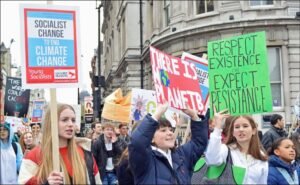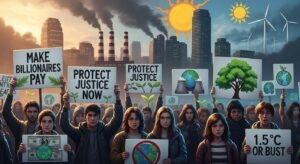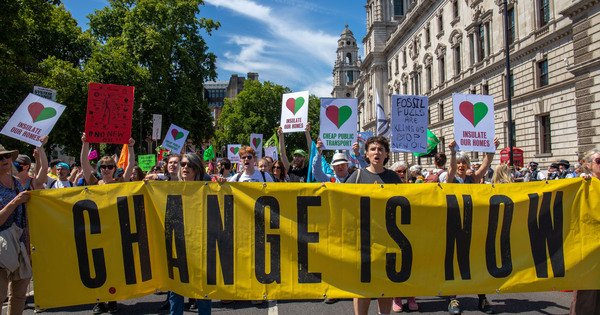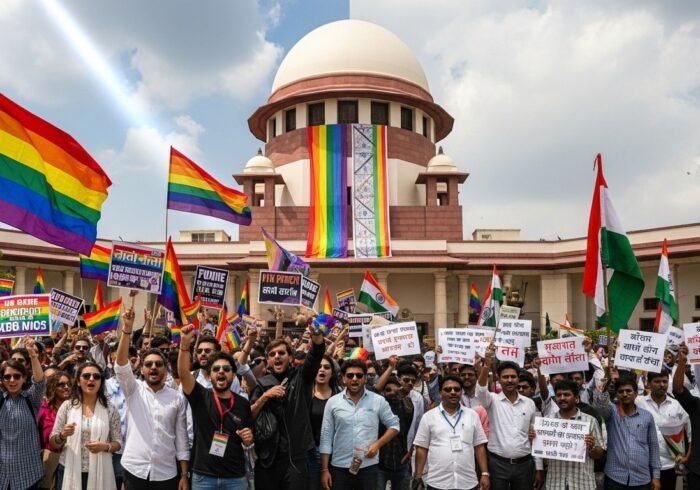Introduction On September 20, 2025, hundreds of climate justice protests erupted globally on the eve of New York Climate Week and the United Nations General Assembly. Organizers across cities convened under banners like “Make Billionaires Pay,” calling out financial institutions, energy companies, and governments for continuing business-as-usual when science warns that greenhouse gas emissions must fall sharply. As extreme weather events increase, many now view rising economic inequality and climate inaction as deeply interlinked threats. The Times of India+3ajc.com+3AP News+3
On September 20, 2025, hundreds of climate justice protests erupted globally on the eve of New York Climate Week and the United Nations General Assembly. Organizers across cities convened under banners like “Make Billionaires Pay,” calling out financial institutions, energy companies, and governments for continuing business-as-usual when science warns that greenhouse gas emissions must fall sharply. As extreme weather events increase, many now view rising economic inequality and climate inaction as deeply interlinked threats. The Times of India+3ajc.com+3AP News+3
What Sparked the Global Mobilization
-
Protesters targeted major financial centers and billionaire-owned properties (for example, Billionaires’ Row in Manhattan) to send messages that those with the most resources should also bear most responsibility for climate damage. ajc.com+2AP News+2
-
A key grievance: many climate agreements and national pledges are too weak, and major fossil fuel producers plan to increase production by 2030 in spite of global targets to limit warming to 1.5°C. The Guardian+1
-
Another concern: the cost barriers for smaller nations and civil society groups to attend climate summits or influence policy are growing, while those with financial power can shape agendas that protect their interests. AP News
Arguments & Counterpoints
-
Protesters’ Viewpoint:
-
Those bearing the highest emissions (corporations, wealthy elites, countries with large fossil fuel sectors) should be more accountable.
-
Climate justice demands not just emission reduction but also reparative actions (loss & damage), equity, and investment in vulnerable communities.
-
Transparency, inclusion, and strong public pressure are essential. Agreements on paper mean little if implementation is missing.
-
-
Opposing Viewpoint / Challenges:
-
Governments and industry argue that abrupt transitions away from fossil fuels can jeopardize energy security, jobs, and economies — especially in countries reliant on oil, gas, or coal.
-
There’s often pushback against high compliance costs, regulatory uncertainty, and the risk that stringent climate policies might harm poorer populations.
-
Some claim that activism and protest alone are insufficient; policy redesign, innovation, and technological investment are necessary, but these take time and resources.
-
Recent Developments & Stakes
-
A report co-published by organizations like Stockholm Environment Institute and Climate Analytics warns that many leading fossil fuel producers plan to raise production by 2030; this puts global targets (like keeping warming under 1.5°C) at serious risk. The Guardian
-
Global summit preparations (like for COP30 in Brazil) are under scrutiny: some governments and civil society organizations worry about whether pledges will be meaningful, whether climate finance will flow, and whether marginalized voices will be included. AP News+2The Guardian+2
-
Grassroots momentum seems to be growing: not just protests, but commitments by corporates (carbon removal, renewable energy investment), youth groups, indigenous communities raising impact stories. This multiplies pressure on policymakers. Reuters+1
 Conclusion
Conclusion
The protests around Climate Week are more than symbolic; they represent a growing impatience with delayed promises and policies that protect profit over planet. As the gap widens between what scientific consensus demands and what action unfolds, citizens everywhere are raising their voices. Where governments and institutions falter, public pressure is proving essential. The coming months—especially with summits like COP30—will test whether climate justice becomes concrete action or remains rhetoric.





